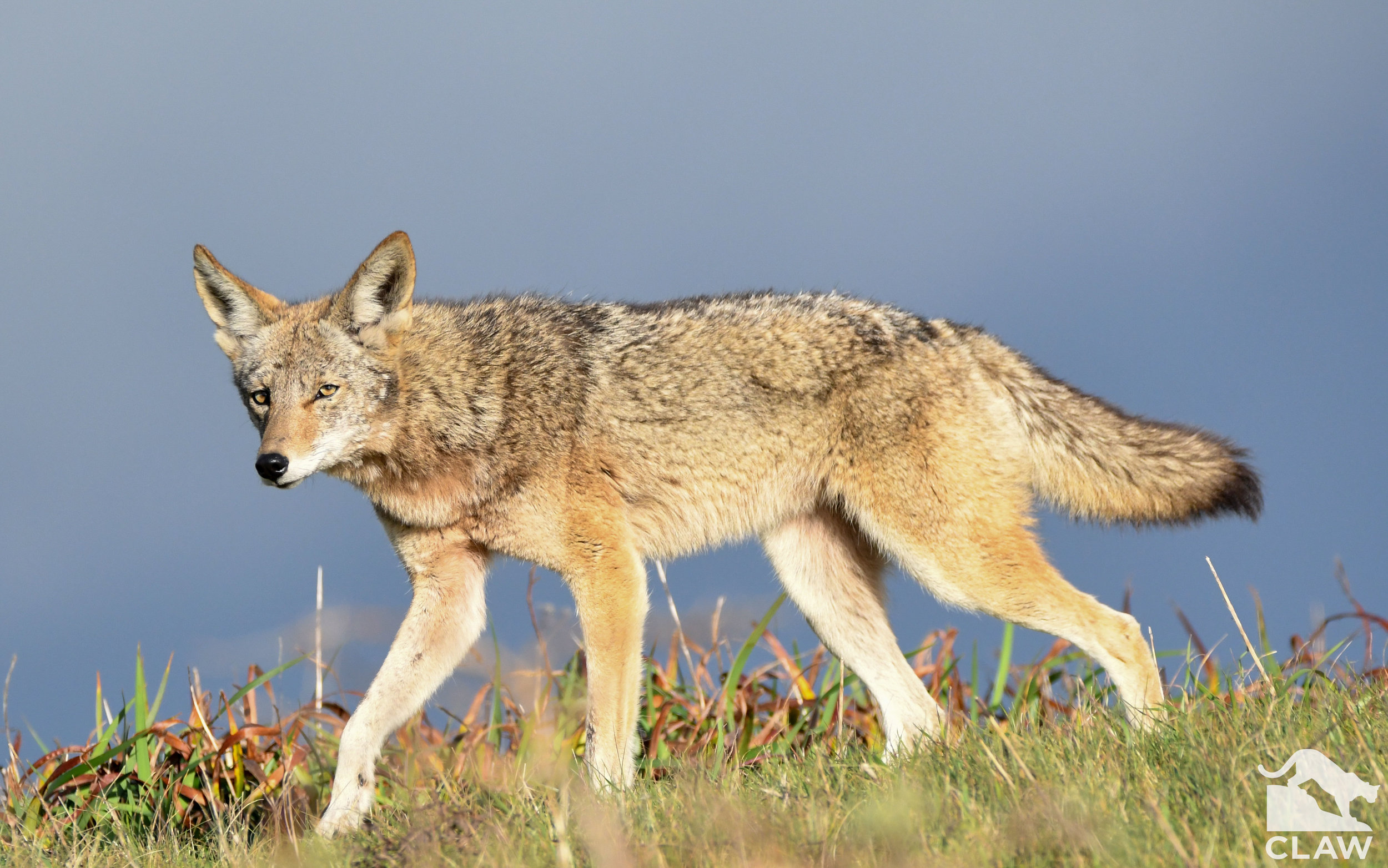Coyote FAQs
Coyotes are a vital part of LA’s ecosystem, and our landscape and communities benefit from the coyote’s many ecosystem services. Coyotes control the populations of animals that may otherwise become pests, such as rodents and rabbits. By keeping smaller predator populations in check, they also help maintain healthy populations of songbirds, which in turn can help reduce mosquito numbers. At the same time, coyotes can be vilified for their potential to predate on our pets. This can lead to unwarranted fear and the spread of misinformation throughout communities or on social media. The following are answers to some frequently asked questions about coyotes.
Are coyotes a danger to people?
Let's take a look at some stats. There are only two confirmed fatal coyote attacks that have occurred on record. While these are tragic cases, their obscurity lends to a statistical chance of virtually zero of a person being killed by a coyote.
What about non-fatal attacks? In 2015, there were 13 coyote bites reported in LA. Compare this to the number of dog attacks in LA County in 2009: 7,623. That's quite a spread! Of course, we interact much more often, and much more intimately with dogs, but given that hundreds of thousands of residents live, work, or play within close proximity to coyotes every day, the chances of being attacked by a coyote appear to be statistically unlikely.
Are there more coyotes in my neighborhood than there used to be?
There does seem to be a trend of increased coyote sightings, and claims of bolder behaviors in some areas. What accounts for this trend? One possible answer is that with camera phones and social media, we are seeing and hearing about sightings in our neighborhood more frequently than we used to. But an underlying cause is habitat loss and fragmentation. As natural habitat is encroached upon and urbanized, the coyotes simply have fewer and fewer places where they can go. Urbanization also leads to an increase in garbage, which is either tasty to a coyote, or attracts tasty scavengers such as rodents. This is one factor that leads to the coyotes that end up in urbanized areas becoming habituated to those areas. In other words, the coyotes look around the developed neighborhoods in which they find themselves and say, "Hey, this place is great!"
What causes coyotes to become habituated to urbanized areas?
Coyote habituation is often the result of human behavior, such as providing food for coyotes accidentally or on purpose. Pet food should never be left outside, as this not only attracts coyotes directly, but also attracts feral cats, which become an additional attractor for coyotes. Other sources of food include garbage or fallen fruit, or defenseless furry prey that meows or barks. Unclean conditions can attract rats, which can eventually attract coyotes as well.
In some cases, habituation is the result of coyotes being fed directly by residents. Feeding or providing food to a coyote is not just a bad idea, it’s also illegal under Los Angeles Municipal Code SEC. 53.06.5 as well as LA County §10.84.010.
Why won’t officials remove coyotes from my neighborhood?
The loss of a pet to a coyote is heartbreaking, and can change the way we feel about our wild neighbors. Many people become frustrated when they reach out to city or state services, only to find that they don’t seem to take much action or participate in a vendetta against their lost pet’s assailants. But there is actually a good reason these officials won’t relocate or kill the offending coyotes: Such actions don’t help, and may actually make matters worse.
Coyotes generally live in family groups that consist of an alpha male and female, their pups, and a couple of non-breeding “helper” adults or sub-adults. The alphas control their turf carefully, making sure young and opportunistic outsiders don’t try to set up shop within their territory. But if the alpha male is killed or removed as a result of being deemed a nuisance, a power vacuum is created in that territory. Young outsiders come in and begin mating with the females. If multiple coyotes have been killed, this temporary lapse in competition results in more successful rearing of pups, possibly leading to an increase in the local coyote population. And crucially, because the fundamental underlying causes of the coyote’s undesirable behavior have not been addressed, this new generation continues to unwittingly commit the coyote crimes of its predecessors.
How can I protect my pets and keep coyotes out of my yard?
Coyotes are here to stay, proving their resilience throughout history as they have survived numerous attempts to eradicate them. Our best course of action is to coexist with them, and this means breaking the chain of habituation. Rule #1 in breaking this chain is to never feed coyotes. This also means not leaving food or water for pets outside, securing garbage bins, and cleaning up after fallen fruit. Taking steps to protect our pets doesn’t just keep them safe, it also helps prevent coyote habituation. Cats should stay indoors, or have access to a “catio,” an enclosed outdoor area where they can sunbathe and get some fresh air without being exposed to outside dangers. Dogs should not be left outside unsupervised, and should always be walked on a 6 foot leash. Walking in groups can help deter coyotes, as can switching up the walking route so coyotes do not learn the daily routine. If a coyote is spotted, small pets (and children) should be picked up immediately. Coyotes can easily scale most neighborhood fences, and “coyote rollers” can be an effective way to keep them from doing so. These rolling tubes are installed on the top of fences so that the coyote cannot get a good enough grip to climb over.
What is coyote hazing?
Hazing teaches coyotes what they seem to be gradually forgetting over the years: that humans are scary creatures to be avoided. This can be accomplished by “hazing” coyotes. When you come across a coyote, make yourself big, wave your arms in the air, and make lots of noise. This can be from yelling, or from noisemakers such as an airhorn or soda can full of bolts. If you are comfortable, walk towards the coyote, but do not corner it. If necessary, throw rocks around the coyote. Continue doing this until the coyote retreats. If you haze and then give up prematurely, all you have taught the coyote is that humans make a lot of weird noise but eventually will go away. Hazing is a community effort. If only one resident is hazing, the coyote will learn that there is one scary individual in the neighborhood, but everyone else is easygoing.
Photo Credit: Eric J. Smith
By making our neighborhoods less attractive as habitat, taking safety precautions with our pets, and teaching coyotes that humans should be avoided, we can reduce conflict and coexist with our wild canine neighbors.
A printable one-sheet version of this information can be found here.
Bite Statistics from:
Baker, R. & Timm, Robert. (2017). Coyote attacks on humans, 1970-2015: Implications for reducing the risks. Human-Wildlife Interactions. 11. 120-132.
Reported Bites data set, 2009, Los Angeles County Veterinary Public Health and Rabies Control Program.


